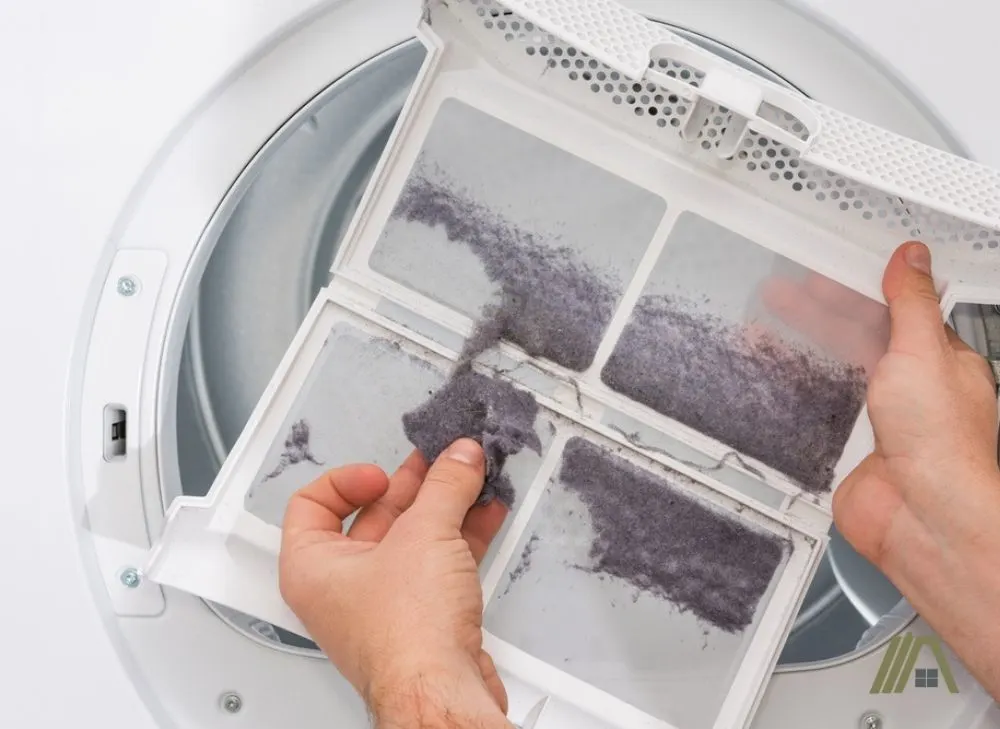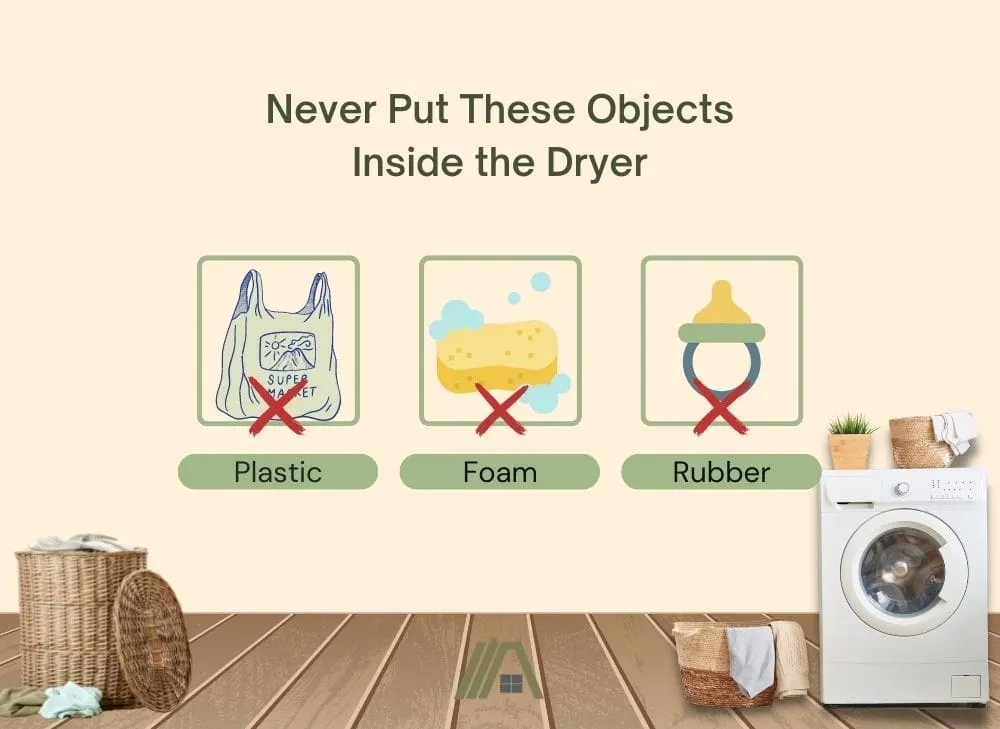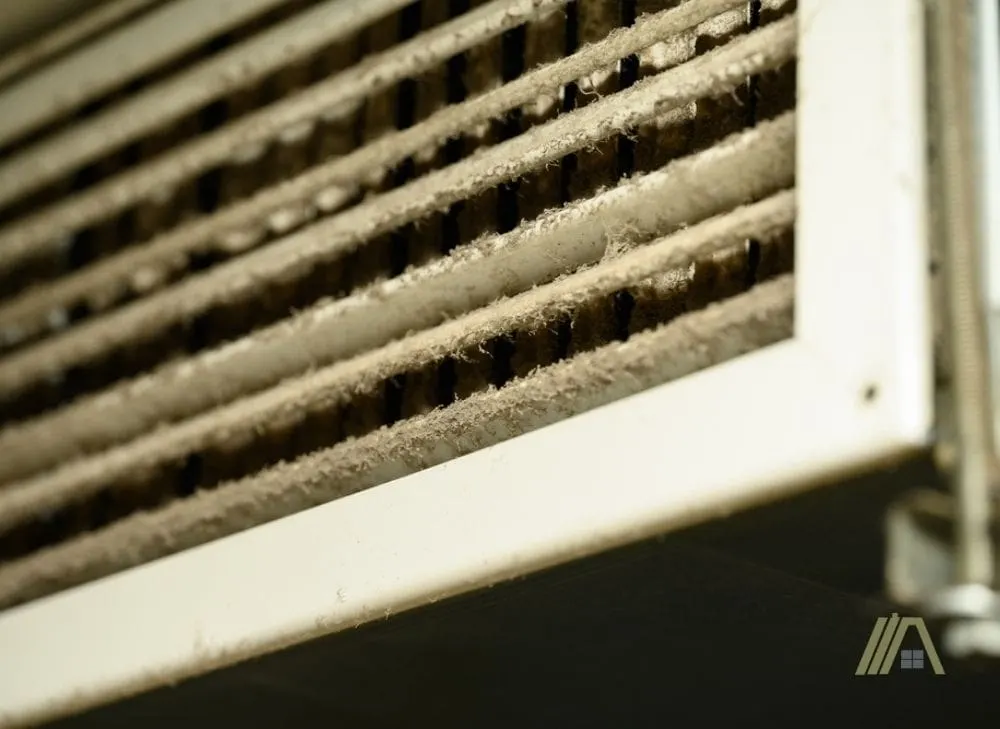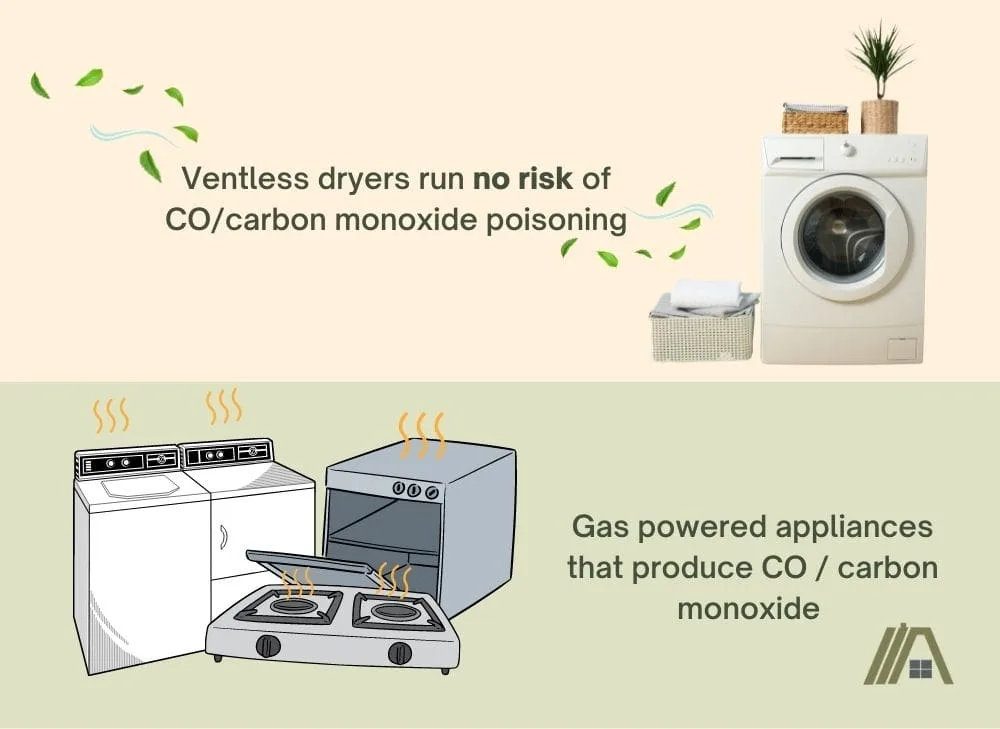With more attention being directed towards ventless dryers comes more questions about them. When I first heard of them, my first questions were about their safety! Of course, the biggest safety concern regarding any dryer is its chance of catching on fire.
However, ventless dryers are just as safe as any other dryer in this regard; in fact, they might even be less of a risk than vented dryers! To understand why that is, let’s first look at why dryers are considered a fire hazard in the first place!

Ventless dryers are no more dangerous than vented dryers. In fact, they are safer and less likely to cause fire as they typically operate at lower temperatures and have fewer places for lint to collect. Additionally, they don’t present any risk of carbon monoxide poisoning.
All Dryers Are Fire Risks
When using any dryer, you are placing flammable materials into a machine that uses high temperatures.
That’s the short of it. Of course, proper ventilation and/or airflow is what prevents every dryer from catching fire all the time, but it still stands that all dryers come with a risk of fire.
In fact, according to the National Fire Protection Association, an average of 14,630 home fires occurred between the years of 2010 and 2014 in association with clothes dryers. (That means a whopping 92% of home fires occur in association with dryers!)
Now, these machines are generally considered safe and convenient. Of course, they must be designed to be safe for general use; however, there are specific causes and contributors that increase the risk of dryer fires occurring.
Common Causes of Dryer Fires
Lint/Fibers/Dust
According to the U.S. Fire Association, 34% of dryer fires are caused by failure to keep the dryer clean. This makes lint buildup the most common cause of dryer fires.
Given that so many fires are started by lint, a great line of defense against these accidents is simply to keep the lint trap cleared out regularly.

The U.S. Fire Administration recommends cleaning your dryer’s lint trap before and after every load. However, in practice, it should be effective to at least clean your dryer before or after each load.
In addition to cleaning the lint trap, you will also want to occasionally clean the back of your dryer and the ductwork of vented dryers, as they may also collect lint and dust over time.
Overloading the Drum
Overloading the drum by placing too many clothes in at once increases the risk of fire in multiple ways.
For starters, more clothing means more lint. If you are not also regularly cleaning your lint trap, you could risk a buildup that catches fire.
Secondly, more clothing means more to dry! If you have so many clothes in the dryer, or if they are soaking wet, they may take more than one cycle to dry. If you are running these cycles back to back, you may cause your machine to overheat.
Lastly, overloading the dryer puts more strain on its internal parts.
An overloaded dryer will experience inadequate airflow, or the additional friction created by the weight may increase heat. In either of these scenarios, the higher temperatures created are a bigger fire hazard.
Drying Unsuitable Items
There are some items that should never be placed in the dryer.
Objects made with plastic, rubber, or foam should never be put inside of a dryer. This is for a couple of reasons. First and foremost, the heat can cause the items themselves to deform due to the materials that they are made from.

Secondly, these items can actually cause fires to occur while in the dryer! Needless to say, they are not suitable for dryers and should be air-dried.
More durable objects containing rubber, such as shoes, still should not be placed inside of a dryer. Even if shoes are not particularly likely to deform or catch fire, they can actually cause damage to your dryer themselves.
The heavy, uneven tumble of a pair of running shoes could dent the drum of the dryer, or put its components under unnecessary stress.
Electrical/Mechanical Failure
As with all appliances and machines, sometimes it is possible for parts to malfunction due to manufacturing issues or wear over time, and not necessarily because of user error or neglect.
There are some signs to look out for that may indicate that your dryer is at risk of failing and starting a fire.
One of the most obvious warning signs is a burning smell in your laundry room.
Additionally, be wary if your dryer room feels hotter while the dryer is running, or your clothes begin coming out burnt or hotter than usual.
You should also be wary if your clothes begin taking much longer to dry.
All of these are potential signs of your machine failing in some way. It would be a good idea to clean and inspect the machine. If you cannot find the problem, it can’t hurt to have a professional take a look.
Ventless Dryers Are Possibly Less of a Risk
While all dryers may have some risk involved, it is likely that the way in which ventless dryers work means that they are slightly less hazardous than their vented counterparts. Let’s dive into why that is.
Fewer Places for Lint to Collect
There are fewer locations in which lint can accumulate in ventless dryers, reducing the number of locations that must be maintained to prevent a lint-related fire.
Both vented and ventless dryers collect lint in lint traps, and both allow minute quantities of lint to escape into various locations.
Where the two types of dryers differ is, as their name suggests, their vents—or their lack of vents.
The ducts of vented dryers are an additional location in which lint is prone to accumulating over time, and many people don’t ever clean them!
Without proper maintenance, these ducts will allow dust and lint to build up, meaning lint traps aren’t the only concern with vented dryers.

Enough of a clog can even prevent the proper expulsion of heat. This means that a clog can further increase the risk of a fire by making the running temperatures rise. (And let’s not forget that the clog itself is made of flammable material.)
Furthermore, ventless dryers typically have a double lint trap system, both of which can be easily emptied. This means that, while lint accumulates in the machine, it is more likely to do so in the designated and easy-to-reach places.
Heat Pump Dryers Use Much Less Heat
While “heat” may be in their name, heat pump dryers (a type of ventless dryer) use the lowest temperatures of all to dry your clothing, running at an average of only about 122 °F (50 °C).
Condenser dryers, also ventless, tend to run at temperatures of 158 °F (70 °C). Electric dryers also run at about this temperature, though both types of dryers may run cooler on their lower settings. Between the two, however, electric dryers tend to run slightly hotter.
Gas dryers are the hottest of all, able to reach up to 170 °F (77 °C) on high settings. Because of this, they are at the highest risk of igniting any lint buildup.
Given that excessive heat is the most common source of dryer fire ignition, heat pump dryers are the least risky when it comes to temperature. This does come with a tradeoff of longer drying times, though.
Further Reduce Ventless Dryer Fire Risk
Already, we know that ventless dryers are less of a fire risk than others. However, if dryer fires are a concern of yours, there are additional steps you can take to further increase their safety.
Regularly Empty the Lint Trap
Just like with vented dryers, the lint trap of ventless dryers should still be cleaned regularly. That means cleaning them at least once per load, before or after, or both, if you want to comply with U.S. Fire Administration standards.
Remember that this is the most common cause of dryer fires, even if ventless dryers do potentially pose a lower risk!
It’s always better to be safe than sorry, and luckily, it’s just as easy to clean out the lint filters of ventless dryers.
Proper Use
Another way in which to keep any dryer accidents from occurring is to maintain the well-being of the machine by using it properly.
Again, ventless dryers are much like vented dryers in this way. This means care should be taken not to dry items that do not belong in the laundry, such as shoes or mats with rubber backings.
This also means taking care not to overload ventless dryers. Remember, placing soaking wet laundry in the dryer or too many clothes into the dryer can cause extra strain on the machine.
A Yearly Machine Deep-Clean
Deep-cleaning the machine every year is a good practice that can prevent lint from building up in even less visible areas.
While the lint traps will catch most of the lint within a dryer, tiny dust and lint particles will always find a way to escape. Over a long period of time, they may find their way into the inner workings of your machine.
Regular, thorough cleaning is sure to prevent internal lint buildups.
No Extension Cables
If possible, it would be a good idea not to use an extension cord with your dryer.
It is technically possible to do so safely, but this is not a recommended practice, as dryers require very high amounts of electricity.
This is even more true for electric dryers since they run solely on electricity, but even gas dryers are only marginally safer. This is just for your information; ventless dryers will never be gas-powered (more on this in a moment).
Using an extension cord with a machine that requires so much power increases the risk of starting an electrical fire, especially if the lead is improperly matched.
If you know anything about electrical fires, then you know they can happen in an instant—and they can be tricky to put out!
Ventless Dryers Will Never Be Gas-Powered
No ventless dryer will ever be gas-powered. This means that beyond the other features that make them less of a fire risk, ventless dryers run no risk of CO/carbon monoxide poisoning.
This poisoning is only a risk with gas-powered dryers, as carbon monoxide is a fume that is created as a by-product of combustion. It is particularly dangerous as it is not only colorless, tasteless, and scentless but also deadly in high volumes.

Normally it would be vented out through a gas dryer’s vent but, as always, accidents happen! If you own a gas dryer, it’s definitely a good idea to keep a carbon monoxide detector near it (if you don’t already).
Ventless Dryers May Pose a Risk to VOCs
Dryer exhaust contains VOCs that are known to be harmful to humans in certain quantities. The source of these VOCs may be fabric softeners, dryer sheets, or both.
The fact that these dryers are still permitted for use in homes indicates that this risk is not currently thought to be too concerning, however, there are also manufacturers who say that dryer sheets should not be used with ventless dryers. Happily, dryer sheets are not necessary for function.
Sources
https://www.beko.co.uk/support/faqs/tumble-dryers/differences-between-heat-pump-and-condenser-dryer
https://dryerventsquad.com/benefits/prevent-carbon-monoxide-poisoning/
https://www.economical.com/en/blog/economical-blog/november-2017/how-to-prevent-dryer-fires
https://energized.edison.com/stories/understanding-different-washer-dryer-settings
https://fredsappliance.com/service/3-tips-to-help-you-prevent-your-dryer-from-catching-on-fire/
https://homeappliancehero.com/large-home-appliances/dryers/how-hot-does-a-dryer-get/
https://www.hunker.com/12003256/the-maximum-temperature-for-a-clothes-dryer
https://jenkinsrestorations.com/preventing-dryer-fires-in-your-home/
https://www.rockethomes.com/blog/homeowner-tips/dryer-fire-causes-and-prevention
https://www.usfa.fema.gov/prevention/outreach/clothes_dryers.html
https://www.wash.com/blog/washresources/11-items-that-should-never-go-in-the-dryer/

